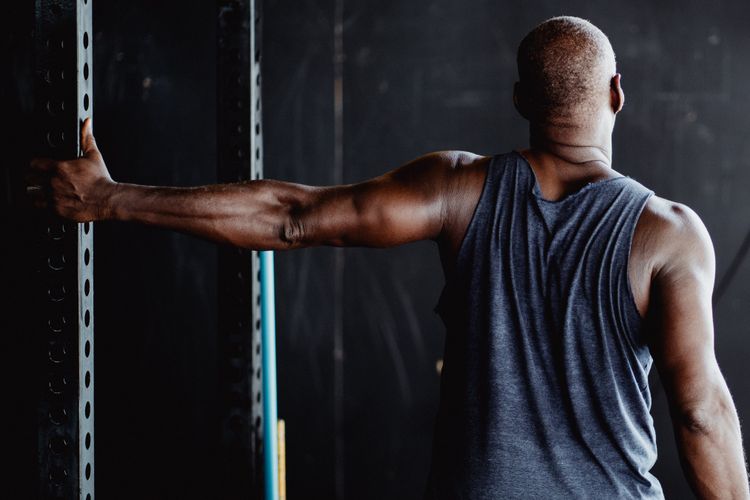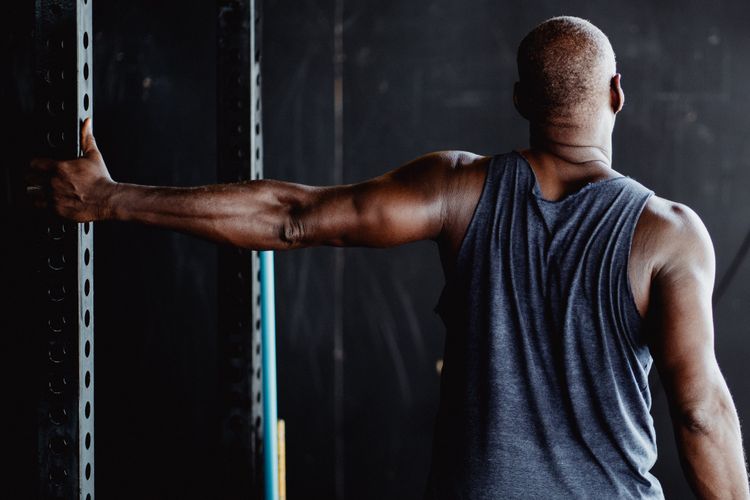🦀 PT Crab Issue 120 - Rotate!
To make up for some of the deficiencies my graphic showed last week, we’re digging into the rotator cuff today with a piece about adding PNE to your regular PT. King Crab supporters made off with three articles this week expressing both opinions and facts regarding rotator cuff tears and rehab. Become a supporter here for all the content.
Also, to continue the parasocial relationship we’ve got going, I’m currently writing this while snugged up with my dog on a camping mattress in the back of my minivan. We’re heading from Virginia to Oregon for my final clinical and are currently in Moab, UT. We’ve been camping our way across the country and I think it’s great! Kiwi thinks it’s just okay. She’s a bit tired of camping. So she spent the day at daycare while I went mountain biking. Tomorrow Idaho, Sunday Portland, and Monday, work :(
For now, let’s dive in!
Add PNE to RTC Tears? Maybe.
The Gist - This piece from journal Brain Sciences in 2022 reports on a randomized controlled trial that split participants recovering from arthroscopic rotator cuff repairs into two groups. They both received PT 5 days/wk for 4 weeks for 115(!) minutes per session according to the same protocol. One group of 17 people also received pain neuroscience education (AKA PNE) twice for 30 minutes at a time.
The PNE included discussions of the neurophysiology of pain, concepts of pain control, the pain alarm system, shoulder biomechanics, and more and was presented in groups using “audiovisual materials”.
The PT included 35 minutes per session of modalities including superficial heat, TENS, and microwave therapy, 30 minutes of manual therapy including soft tissue and joint mobilization, and 50 minutes of exercises including 30 minutes of ROM and 20 of ther ex. It was a lot.
Outcome measure-wise, they looked into pain intensity and cognition, ROM, the DASH, and kinesiophobia. Overall, there were just a few differences across the board. Kinesiophobia and the intensity of “usual pain” both decreased relative to the other group, while active shoulder flexion, caption, abduction, and external rotation all improved more in the PNE group than the normal one. From this relatively small study (34 people with an average age of 51), it looks like PNE could be helpful and may be easy to loop into patient education after rotator cuff repair.
Tell Me More - I know that was already a lot, but there is a bit more to give. Participants were recruited when they were 4 weeks post-repair and adults over the age of 65 were excluded from the study. They also excluded people who had previous finding of OA in the affected shoulder. This definitely reduces the study’s applicability. They built this study off of a bundle of studies they did regarding PNE and gave all participants the same education so I’d imagine we’ll see more from this group in the future.
Another bit to mention is the extent of PT was immense and they don’t get into what they mean about ROM and therapeutic exercise. This isn’t super important since everyone went through the same protocol, but it’s a continuous annoyance for me as a research reader. Tell me what your participants did! But I digress.
Also, here’s the paper.
Paper - Paper
And with that, it’s time to sign off, fill my hot water bottles (it’s going to be 24° tonight) and heady to beddy. It’s cozy in the van (AKA Gerti) but still a bit chilly, so we’re gonna stay as warm as we can in here. Hope you have a nice night.
Greetings from Utah,
Luke and Kiwi






Comments
Want to leave a comment and discuss this with your fellow PTs? Join PT Crab and get summarized PT research in your inbox, every week.